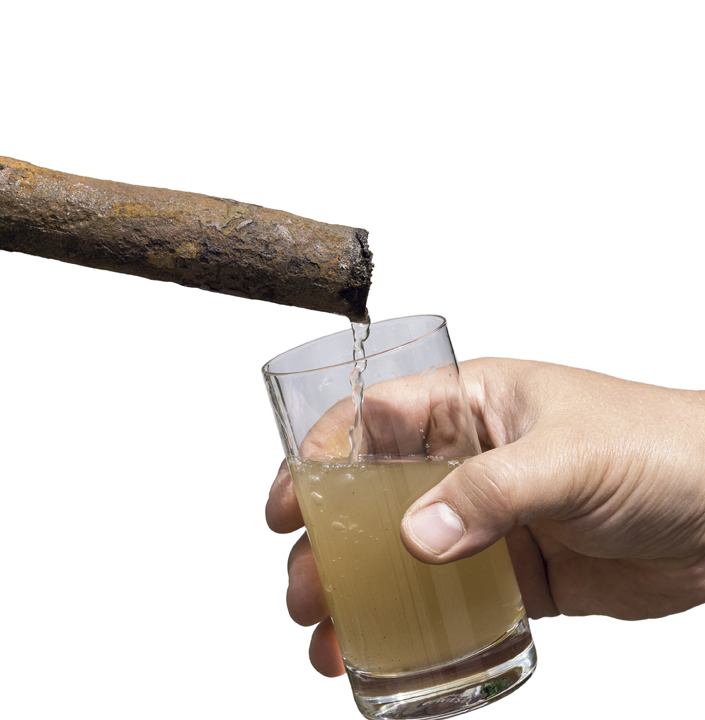There’s plenty of action and plenty of mold in the market
With their lawsuit filed, the residents of Clairton, Pennsylvania, are clearly not stopping there. A band of residents filed a class action suit against U.S. Steel, claiming that the company’s Clairton Coke Works has effectively lowered their property values by repeatedly releasing by-products into the air around the Western Pennsylvania town (6,700 times between 2012 and 2015), violating its air permit.
It’s an issue that could mushroom for the company. Residents couple comments on the violations with talk of cancers that have plagued their town. The plant that once employed many of the people in the region is now being painted as the cause of numerous ills.
“[M]old is not generally covered under a builders risk, property or GL policy, but almost all property owners and contractors have a mold exposure.”
—Barry Geisler
Divisional Senior Vice President
Environmental Division
Great American Insurance Group
In a recent report by Allianz Global Corporate and Specialty Division, environmental damage was seventh on the list of liability losses for businesses worldwide. Such damage can prove to have a long tail, say the experts.
Still, there’s plenty of activity in the environmental and pollution liability market. “The market remains very robust and is fierce, in terms of both coverage and pricing,” says Barry Geisler, divisional senior vice president in Great American Insurance Group’s environmental division. “At this time approximately 40 to 50 carriers are offering some type of pollution coverage.”
That, Geisler says, translates into ample capacity. “In general, the base coverages—bodily injury, property damage and remediation costs—are fairly consistent throughout the industry. However, certain carriers are offering some ancillary coverages, such as cyber liability, disinfection, contingent business interruption and mitigation/rectification, in an effort to differentiate themselves.”
And at least one carrier has exited the market. AIG chose not to underwrite new site pollution business as of 2016, a market of which the company had controlled 30% to 40%. Still, an estimated 20 players are still in the site pollution market with more on the way.
Jon W. Peeples, vice president of Tokio Marine Specialty Insurance Company, says the environmental insurance market is expanding, and several new entrants have come onto the scene within the last year or so.
Andries Willemse, vice president of the specialty loss group and executive general adjuster for Engle Martin and Associates, says that although the market has seen a year-over-year increase in the number of policies issued since the mid-1970s, overall market penetration remains between the 10th and 15th percentile range.
“Despite an ever-increasing need for coverage in new classes of business, distribution channels appear to struggle to keep pace due to complex and non-standard forms, pollution exclusions in property and liability policies, and a lack of broker training and experience,” he comments, noting that contamination exclusions in property and liability policies are also driving the need for more specialized coverage. “Premiums remain relatively low despite massive losses.”
“Several companies diversified their operations by creating environmental units in 2016 and 2017, while several managing general agents or underwriting units were backed by international reinsurers,” says Peeples. “Quite a few carriers have also recently added products, which has increased capacity and competition and kept pricing, terms and conditions competitive.”
Renee Miller, senior vice president and chief underwriting officer at Freberg Environmental, Inc., says the market is “very crowded with many competitors.” She says the competition is pushing minimum premiums downward. “The environmental contracting marketplace is the most competitive; however, the environmental impairment liability marketplace also has its fair share of competition,” she adds.
As for what’s new in the space, not much, it seems. All experts are reporting that new products are not being developed or introduced, which some think may be an opportunity for insurers to differentiate themselves from competitors. Willemse says agricultural products are being introduced that “cater for historical water quality and solid waste disposal laws traditionally applied to the industrial sector.”
He adds that farming practices that result in groundwater contamination are becoming a challenge for the agricultural sector, which has seen its share of activist attention. “Because the basic premise is ‘polluter should pay,’ remediation is not only a costly prospect, but can also create a public relations nightmare. We have seen some extraordinary environmental actions during the past five years coupled with a general increase in environmental awareness and resulting public actions.”
Smaller contractors, he says, need to be equally aware and appropriately covered. “Even those dealing with small remodeling projects need to be covered for exposures like the disturbance of lead-based paint or HVAC systems that cause mold to develop at a later stage.”
Where the claims are
Because pollution and environmental concerns run the gamut in terms of both industry and sector, it’s difficult to identify any one primary claim driver. Peeples says that mold continues to create a lot of buzz in the claims arena, which is where he’s seen some intense activity. “Generally, the environmental marketplace has been very successful selling pollution coverage to real estate investment trusts (REITs) and real estate owners (REOs),” he notes. These operations tend to focus on multi-tenant habitational properties, such as hospitality, office, commercial and retail operations, he adds.
Within those properties, Peeples says that water intrusion losses are increasing in frequency, “especially with all the rain in the west. So the number of mold claims has risen dramatically over the past several years.”
Geisler sees the same trend. “Unquestionably, mold is the most frequent claim at this time. Claims arising from mold seem to span all products and many different types of risks.” Among those, hotels, apartments and condos make up the majority of claims, with claims often occurring while capital improvements are being made. “Brokers with clients that engage in these types of services or that own these types of properties should fully vet these exposures and prepare their clients to answer questions from the carrier about their mold procedures and protocols.”
Another area of concern, Geisler says, is the increasing number of claims stemming from contractor activity. “Wood-framed construction projects and those that use gypsum concrete have seen the most severe claims. If the contractor does not take steps to prevent water infiltration prior to the building envelope being completed, or if it does not allow the gypsum concrete to properly dry and cure, mold will likely grow.”
Miller sees another claim driver, and it is one that can be easily mitigated. “While not new, insureds that do not use contracts in the course of their business continue to be problematic with respect to claims,” she says. “Lack of contract use consistently increases the cost of a claim. Agents and brokers should encourage their clients to incorporate contract use as standard operating procedure. If an insured does not have in-house expertise, many resources are available on the web.”
If that’s not enough, Geisler says, one particular claim source could become more of an concern. “While vapor intrusion has been an issue for many years, recently there’s been increased scrutiny and a push to reduce the standards applicable to many pollutants, especially volatile organic compounds (VOCs). As a result, formerly closed sites are being reopened from a regulatory standpoint and consultants are paying more attention to this issue when evaluating the environmental risks associated with a location. We expect claims in this area to increase accordingly. Additionally, following the high-profile issues in Flint, Michigan, drinking water has become a hot topic,” Geisler says.
Advice for agents and brokers
Agents and brokers, Geisler says, should anticipate increased interest on the part of carriers with regard to such exposures. Geisler says it’s important for agents to point out coverage gaps, and the best way is to “provide clients specific examples of claims that likely are not covered by their GL, auto or property policies. For example, mold is not generally covered under a builders risk, property or GL policy, but almost all property owners and contractors have a mold exposure.”
An awareness program also helps, says Peeples, who suggests that agents and brokers help clients develop water intrusion plans and awareness of mold, its causes, its impact and a solid response. “Your client can hire an environmental consulting firm to help develop the proper protocols or review its property manager’s response plans or processes,” he says.
Miller also suggests using claim examples to help clients understand the need for environmental coverage. “Agents and brokers should do their best to stay informed so they can share local or industry-related environmental events as examples of how environmental coverage comes into play,” she says.
For more information:
Engle Martin & Asssociates
www.englemartin.com
Freberg Environmental Insurance
www.feiinsurance.com
Great American Insurance Group
www.greatamericaninsurancegroup.com
Tokio Marine Specialty Insurance Company
www.tmsic.com
The author
Lori Widmer is a Philadelphia-based writer and editor who specializes in insurance and risk management.






